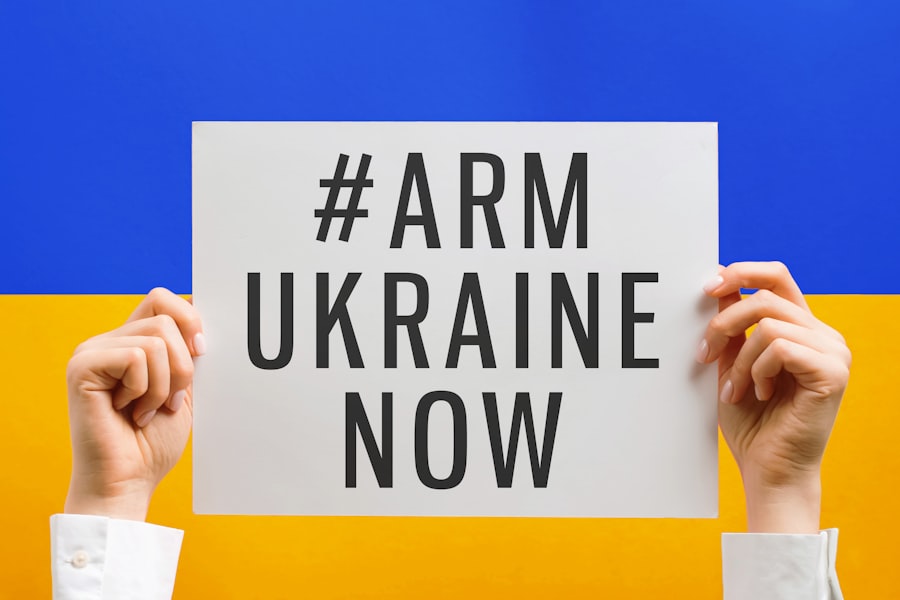The Cold War arms race emerged from the geopolitical tensions that followed World War II, primarily between the United States and the Soviet Union. As the two superpowers emerged from the ashes of the war, their conflicting ideologies—capitalism versus communism—set the stage for a prolonged period of rivalry. The division of Europe into Eastern and Western blocs, marked by the Iron Curtain, created an environment ripe for competition.
The United States, having developed and successfully used atomic bombs against Japan, sought to maintain its military superiority, while the Soviet Union, feeling threatened by Western powers, accelerated its own nuclear program. In the years that followed, both nations engaged in a relentless pursuit of military advancements. The arms race was not merely about acquiring weapons; it was also about demonstrating technological prowess and ideological superiority.
The establishment of NATO in 1949 and the Warsaw Pact in 1955 further solidified the divide, as both alliances sought to bolster their military capabilities.
Key Takeaways
- The Cold War Arms Race was fueled by the rivalry between the United States and the Soviet Union, leading to a rapid escalation of military capabilities.
- Nuclear weapons played a central role in the Arms Race, with both superpowers developing and stockpiling these destructive weapons as a deterrent against each other.
- The race for missile technology became a key focus of the Arms Race, as both sides sought to develop intercontinental ballistic missiles capable of delivering nuclear warheads.
- Espionage and intelligence gathering played a crucial role in the Arms Race, with both sides engaging in covert operations to gain information about each other’s military capabilities.
- The Space Race served as a front for the Arms Race, with both superpowers competing to demonstrate their technological and military prowess through achievements in space exploration.
The Role of Nuclear Weapons in the Arms Race
Nuclear weapons became the centerpiece of the Cold War arms race, symbolizing both power and deterrence. The destructive capability of these weapons was unparalleled, leading to a doctrine known as Mutually Assured Destruction (MAD). This doctrine posited that if one superpower launched a nuclear attack, the other would respond with equal or greater force, resulting in total annihilation for both.
This grim understanding created a precarious balance; while it prevented direct conflict between the superpowers, it also fostered an environment of fear and uncertainty. As both nations expanded their nuclear arsenals, they engaged in a series of tests that showcased their capabilities. The United States conducted its first successful hydrogen bomb test in 1952, followed by the Soviet Union’s own test a year later.
These developments not only heightened tensions but also spurred further advancements in nuclear technology. The race to develop more sophisticated delivery systems, such as intercontinental ballistic missiles (ICBMs), became a priority for both nations, as they sought to ensure that their nuclear capabilities could reach their adversaries effectively.
The Race for Missile Technology

The quest for missile technology was a critical aspect of the Cold War arms race, as both superpowers recognized that possessing advanced delivery systems was essential for maintaining a strategic advantage. The development of ICBMs marked a significant turning point in military strategy, allowing for nuclear weapons to be launched from vast distances. This capability shifted the focus from merely stockpiling warheads to ensuring that they could be deployed quickly and accurately.
The United States initially held an advantage in missile technology, but the Soviet Union rapidly caught up, culminating in the successful launch of Sputnik in 1957. This event not only demonstrated Soviet prowess in space but also raised alarms in Washington about the potential for missile strikes from space. In response, the U.S.
accelerated its own missile development programs, leading to a series of tests and advancements that would define military strategy for decades. The competition for missile technology became emblematic of the broader arms race, as each side sought to outpace the other in a bid for global dominance.
Espionage and Intelligence Gathering during the Arms Race
| Country | Number of Spies | Intelligence Operations |
|---|---|---|
| United States | 500 | Covert operations, wiretapping |
| Soviet Union | 700 | Double agents, codebreaking |
| United Kingdom | 300 | Surveillance, propaganda |
Espionage played a crucial role in shaping the dynamics of the Cold War arms race. Both superpowers recognized that intelligence gathering was essential for understanding each other’s capabilities and intentions. The use of spies, satellite reconnaissance, and other forms of intelligence became commonplace as each side sought to gain an upper hand.
The infamous U-2 incident in 1960, where an American spy plane was shot down over Soviet territory, highlighted the risks associated with espionage and underscored the high stakes involved. The intelligence community on both sides worked tirelessly to uncover secrets related to nuclear programs and missile technology. The establishment of organizations such as the CIA in the United States and the KGB in the Soviet Union facilitated this effort.
These agencies engaged in covert operations aimed at infiltrating enemy ranks and gathering critical information. The information obtained through espionage not only influenced military strategies but also shaped public perception and policy decisions during this tumultuous period.
The Space Race as a Front for the Arms Race
The Space Race emerged as a significant front in the broader context of the Cold War arms race. While ostensibly focused on scientific exploration and technological advancement, it was deeply intertwined with military objectives. The launch of Sputnik by the Soviet Union in 1957 marked a pivotal moment, as it demonstrated not only technological superiority but also potential military capabilities that could threaten U.S.
security. In response to this challenge, the United States ramped up its own space program, culminating in significant achievements such as the Apollo moon landing in 1969. However, beneath these scientific milestones lay a fierce competition for dominance in missile technology and satellite capabilities.
Both nations recognized that control over space could translate into strategic advantages on Earth, leading to increased investments in research and development. The Space Race thus became a reflection of national pride and technological prowess while simultaneously serving as a critical component of military strategy.
The Impact of the Arms Race on Global Politics
The Cold War arms race had profound implications for global politics, shaping alliances and influencing international relations for decades. Countries around the world were forced to navigate the complex landscape created by the rivalry between the superpowers. Many nations aligned themselves with either NATO or the Warsaw Pact, seeking security through association with one of the dominant powers.
This division often led to proxy wars in various regions, as both superpowers sought to expand their influence while avoiding direct confrontation. Moreover, the arms race fueled an atmosphere of fear and suspicion that permeated global politics. Nations felt compelled to develop their own military capabilities or seek alliances with one of the superpowers to ensure their security.
This dynamic contributed to an arms proliferation crisis, as countries sought to acquire nuclear weapons or advanced military technology to deter potential threats. The consequences of this arms race extended beyond Europe and North America, affecting regions such as Asia, Africa, and Latin America, where local conflicts often mirrored the larger ideological struggle between capitalism and communism.
The Cuban Missile Crisis: a Tense Moment in the Arms Race
The Cuban Missile Crisis of October 1962 stands as one of the most critical moments in the Cold War arms race, bringing the world perilously close to nuclear conflict. When U.S. intelligence discovered Soviet missiles stationed in Cuba, just 90 miles from American shores, tensions escalated dramatically.
President John F. Kennedy faced immense pressure to respond decisively while avoiding a full-scale war that could lead to catastrophic consequences. The standoff lasted for thirteen days, during which both sides engaged in intense negotiations and military posturing.
Ultimately, a combination of diplomacy and back-channel communications led to a resolution: the Soviet Union agreed to withdraw its missiles from Cuba in exchange for a U.S. commitment not to invade the island and a secret agreement to remove American missiles from Turkey. This crisis highlighted not only the dangers inherent in the arms race but also the importance of communication and negotiation in preventing escalation.
The Arms Race and its Effect on Society and Culture
The Cold War arms race had far-reaching effects on society and culture across both superpowers and beyond. In the United States, fear of nuclear war permeated everyday life, leading to widespread anxiety about potential attacks. Civil defense drills became commonplace in schools, teaching children how to “duck and cover” in case of an emergency.
Popular culture reflected this anxiety through films, literature, and music that explored themes of nuclear apocalypse and existential dread. In contrast, Soviet society experienced its own unique cultural responses to the arms race. Propaganda emphasized technological achievements and portrayed nuclear power as a symbol of national strength.
Artists and writers grappled with themes of heroism and sacrifice in light of their nation’s military ambitions. Both societies were shaped by their respective narratives surrounding nuclear weapons—one emphasizing deterrence and security while the other focused on ideological superiority and technological progress.
Uncovering Cold War Arms Race Secrets: Declassified Documents and Revelations
As time passed, many secrets surrounding the Cold War arms race began to emerge through declassified documents and historical research. These revelations provided new insights into decision-making processes, military strategies, and diplomatic negotiations that had previously been shrouded in secrecy. Scholars and historians have since examined these documents to better understand how leaders navigated this complex landscape.
One notable example is the release of documents related to the Cuban Missile Crisis, which revealed just how close both sides came to nuclear war during those tense days in October 1962. Additionally, declassified materials have shed light on espionage activities conducted by both superpowers, revealing how intelligence shaped military strategies and public perceptions during this period. These insights have contributed significantly to our understanding of not only the arms race itself but also its broader implications for international relations.
The Legacy of the Cold War Arms Race
The legacy of the Cold War arms race continues to influence global politics today. While formal hostilities between the United States and Russia have diminished since the end of the Cold War, many aspects of their rivalry remain evident in contemporary international relations. Nuclear proliferation remains a pressing concern as nations seek to develop or maintain their own arsenals amid ongoing tensions.
Moreover, lessons learned from this period have informed modern disarmament efforts and non-proliferation treaties aimed at preventing future conflicts driven by nuclear weapons. The establishment of organizations such as the International Atomic Energy Agency (IAEA) reflects a collective recognition of the need for oversight and cooperation among nations regarding nuclear technology.
Lessons Learned from the Cold War Arms Race
The Cold War arms race offers several critical lessons for contemporary policymakers navigating an increasingly complex global landscape. One key takeaway is the importance of communication and diplomacy in preventing escalation during times of tension. The Cuban Missile Crisis serves as a poignant reminder that open channels for dialogue can avert catastrophic outcomes even when stakes are high.
Additionally, understanding historical contexts can inform current approaches to disarmament and non-proliferation efforts. As new technologies emerge and geopolitical rivalries evolve, it is essential for nations to engage collaboratively rather than competitively when addressing security concerns related to weapons proliferation. Ultimately, reflecting on this tumultuous period can guide future generations toward more peaceful resolutions while recognizing that vigilance is necessary to prevent history from repeating itself.
In the shadowy world of the Cold War, the arms race was a pivotal element that defined the era, with both superpowers amassing vast arsenals of nuclear weapons. This intense competition for military supremacy was shrouded in secrecy, with each side striving to outdo the other in technological advancements. For those interested in delving deeper into the clandestine operations and strategies that characterized this period, an insightful article can be found on the War Room website. This piece explores the intricate details and lesser-known aspects of the arms race, shedding light on the covert tactics employed by both the United States and the Soviet Union. To read more about these fascinating revelations, visit the article on In the War Room.
WATCH THIS! 🪖How Stolen Nazis Built Cold War Power
FAQs
What was the Cold War arms race?
The Cold War arms race was a period of intense military competition and technological development between the United States and the Soviet Union from the late 1940s to the early 1990s. Both superpowers sought to outdo each other in terms of nuclear weapons, missile technology, and military capabilities.
What were some of the key secrets of the Cold War arms race?
Some of the key secrets of the Cold War arms race included the development of advanced missile systems, espionage activities, and the construction of underground bunkers and command centers to protect leadership in the event of a nuclear attack.
How did espionage play a role in the Cold War arms race?
Espionage played a significant role in the Cold War arms race, with both the United States and the Soviet Union engaging in extensive intelligence-gathering operations to obtain information about each other’s military capabilities, technological advancements, and strategic plans.
What were some of the technological advancements during the Cold War arms race?
During the Cold War arms race, both the United States and the Soviet Union made significant advancements in missile technology, nuclear weapons development, and military hardware such as aircraft, submarines, and radar systems.
How did the Cold War arms race come to an end?
The Cold War arms race came to an end with the dissolution of the Soviet Union in 1991, which led to a significant reduction in military tensions and a scaling back of nuclear arsenals by both the United States and Russia.




